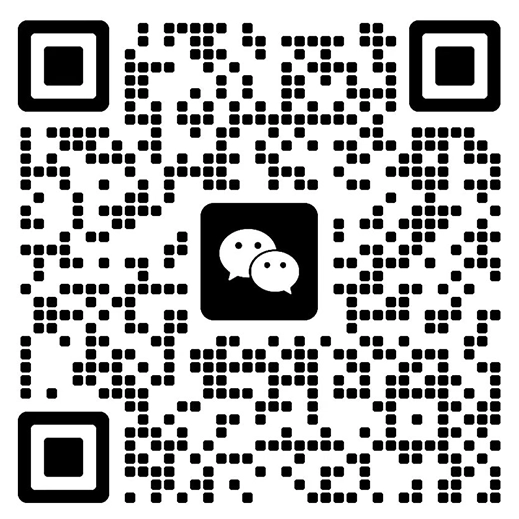Capital One Interview Tips: OA Questions and VO Interviews
At Capital One, the interview process typically begins with a resume screening designed to assess a candidate's technical background and relevant project experience, particularly proficiency in areas such as data, software, etc. Applicants who pass the screening are invited to a first round of phone or video interviews, which are typically conducted by an engineer or senior staff member, focusing on your technical fundamentals, mastery of specific programming languages and problem-solving skills.
Candidates who successfully pass the first round of interviews move on to the second round of Superday interviews, which typically have multiple sessions, including technical, behavioral, and case studies. Technical interviews typically delve into core technologies such as algorithms, data structures, and system design, and may require you to solve real-world programming problems on a whiteboard or in an online editor. Behavioral interviews, on the other hand, will assess your communication skills, teamwork, and how you face challenges through situational questions. Interviewers pay close attention to how a candidate combines technical skills with business thinking, and whether he or she has the potential for continuous learning and growth.
Capital One OA interview notification will usually be sent out within 2 weeks of the candidate's application, and the questions will be answered on the Synap platform. As the company is a FinTech company, the OA interview questions will focus on numerical reasoning and quantitative judgment, and this round of online assessment is relatively compact, with a task length of less than 60 minutes. This round of online assessment is less than 60 minutes long, the time is relatively tight, the candidate is required to complete 5 questions within the time limit, the questions will be biased towards Captial One's business scenarios or business related, the data table and data logic as the core of the technical investigation.
The following questions are CSOAsupport interview support Team's solutions to live questions given to trainees in OA interviews
OA Interview Question 1 with Solutions
A new hero, the Worthy Wizard, has joined the Hero Council, and you've been tasked with analyzing his initial performance to help him grow. You need to determine the length of Worthy Wizard's most common tasks to understand his typical workflow and provide targeted feedback.
Data: Below is a record of the number of hours (in hours) that Worthy Wizard has spent on missions in the past month:
[1.5, 2.0, 3.5, 1.5, 4.0, 2.5, 1.5, 3.0, 2.0, 1.0, 1.5]
Question: What is the plural of the length of the "Worthy Wizard" mission?
the process of solving a problem
To find the plural of a set of data, you need to find the value that occurs most frequently.
- Organize the data: List all task durations. 1.5, 2.0, 3.5, 1.5, 4.0, 2.5, 1.5, 3.0, 2.0, 1.0, 1.5
- Count the number of times each value occurs:
- 1.5 Appeared 4 times.
- 2.0 2 occurrences.
- 3.5 1 occurrence.
- 4.0 1 occurrence.
- 2.5 1 occurrence.
- 3.0 1 occurrence.
- 1.0 1 occurrence.
- Find the value that occurs most often: The most frequently occurring values are 1.5It appears a total of 4 times.
Thus, the length of the "Worth a Wizard" questsmode (statistics)be 1.5 hoursThis suggests that tasks of 1.5 hours' duration were the most common for him. This suggests that tasks with a duration of 1.5 hours were the most common for him.
OA Interview Question 2 with Solutions
You, as the head of Hero League, are evaluating a potential trade: exchanging three heroes from your current team for one of your opponent's top heroes, Triumph. "Triumph is expected to accomplish a total of 320 A task. As a result of this deal, your team next 1469 Any mission in which the traded hero is unable to respond due to his absence will be treated as a failure. You can assume that historical data will remain valid in the future.
For example, the hero Blaze Guardian, if not traded, would have completed the 298 and to achieve 93 Game Winner.
Question: What is the minimum "Winning" percentage required to equalize your team's win total before and after a trade? Results are rounded to two decimal places (e.g. 24.37%).
the process of solving a problem
To solve this problem, we need to calculate the total number of wins lost due to trades, and then make the number of new wins from "wins" equal to this loss.
Step 1: Calculate the total number of wins lost to trading
Before the trade, your team's total wins = the sum of the original three traded heroes' wins. After the trade, your team's total wins = the number of "winning" wins.
The title tells us that the hero "Guardian of the Flame" could have completed 298 missions and won 93 victories. Due to the trade, all his victories will become losses.
Number of wins lost = The total number of victories the traded hero would have been expected to win.
Only one example is given in the title: the loss of "fiery guardians" 93 Wins. This is a representative example of the total number of lost wins implied for the three traded heroes. It is reasonable to assume that the three heroes'(grand) totalThe number of lost wins is implicit in the title description.
When the question says "Any mission that cannot be handled due to the absence of the traded hero will be considered a failure", this refers to additional failures due to the reduction in the number of heroes, not the loss of victories due to the heroes themselves. The example of "Guardian of the Flame" given in the question is a direct loss of wins. Therefore, the total number of lost victories is the total number of victories that the traded heroes would have brought.
According to the question, of the three heroes traded, "Guardian of the Flame" originally had 93 victories and he originally completed 298 missions. The question gives 1469 the total number of tasks.320 It's the total number of "winning" assignments.
In order to simplify the calculation, we will use the data of "Guardian of the Flame" as a representative. If the topic has more complex data, it needs to be summarized. In this case, we can understand that the total number of victories lost by these three heroes is 93 victories. If the question requires a more rigorous projection, we should wait for more data. However, based on the only valid data point given in the question, we can assume that the total loss is the value represented by this example, i.e. 93The
Step 2: Calculate the number of wins needed to "win"
In order to break even, the number of wins required to "win" must be equal to the number of wins lost by the team as a result of the trade.
Number of wins required for "victory" = number of wins lost = 93 Game Winner.
Step 3: Calculate the minimum margin of "victory"
Win Rate (Win Rate) is calculated by the formula: number of wins / total number of missions.
The number of "victories" = 93.
Total number of "Victory" tasks = 320.
minimum winning percentage = (Wins Required / Total Missions) * 100%
Minimum winning percentage = (93 / 320) * 100%
Minimum winning percentage = 0.290625 * 100%
Lowest winning percentage = 29.0625%
Step 4: Rounding
The question requires the result to be rounded to two decimal places.
29.0625% Rounded to two decimal places is 29.06%The
Therefore, the minimum win rate for "winning" needs to be 29.06%You'll be able to keep your team in profit and loss after the deal is made.
Capital One VO interview session focuses on a case-oriented question examination model with strong structured content. The interviewer examines your ability to express yourself and your reaction speed through business logic and data, especially for the DS position, and it is difficult for a candidate to leave a good impression to the interviewer if he/she is not adequately prepared for numerical calculations, algorithmic logic reasoning, and so on.
Next we review a real VO interview question and the logic of that question's answer.
VO Interview Questions and Solutions
A major takeout platform plans to launch a subscription service called "Plus Membership" that will charge a fixed monthly fee and offer members free delivery. As a product manager, you need to evaluate the profitability of this new service. Suppose you have obtained the following data:
Monthly membership fee: $5
Average non-member customer unit price: $25
Average delivery charge: $5
Platform draw percentage: 15%
Average number of orders placed by members per month: 6 times
Members are subsidized for the average delivery fee per order: $4
Operational costs (platform maintenance, customer service, etc.): $1 per member per month
Can you estimate how much net profit a Plus member would generate for the company in one year? Also, explain the main sources of revenue and expenses, and describe what you think are the key factors that will affect the long-term profitability of this service.
Ideas for solving the problem
This question centers on performing a simple Unit Economics (UEM) analysis.
First, you need to break down the sources of revenue: membership fees are the main source of revenue, and the increase in the number of orders from members will bring more revenue from the platform's commission. Next, list the expenses: the most important expense is the delivery fee subsidy, and there are also platform operating costs, and add up these figures on a monthly or annual basis on a "per member" dimension to calculate the net profit after subtracting the total revenue from the total expenses. Finally, based on the results, you can further discuss the risks of the service, such as fluctuations in the frequency of member orders, the actual cost of the delivery subsidy (which may be higher than the average), and member churn, all of which may affect profitability. With such an analysis, you have not only demonstrated quantitative calculation skills, but also a deep understanding of the business model.
system design
As a fintech company, Capital One's Credit Card App has millions of users logging in every day. You've been asked to design a back-end system that can recommend, in real-time, the financial products that best match each user's interests, such as higher limit credit cards, financial products, or loans. The system needs to be able to display highly personalized recommendations based on real-time user behavior such as browsing, clicking, claiming, and historical data, the moment they open the app, and dynamically adjust as user behavior changes. The system must maintain extremely low latency in a highly concurrent environment to ensure a smooth user experience.
System Design Ideas:
When designing such a system, the primary challenge is to handle massive amounts of user behavior data and ensure that recommendations are made in real-time. To achieve this goal, we can build a real-time data streaming pipeline with message queues like Kafka to collect every click, browse, and claim behavior of users.
This data is processed in real-time and updated into a behavioral profile of the user, which can be stored in a High-speed Cache, such as Redis, to ensure very low query latency. The recommendation algorithm itself can use Collaborative Filtering or Deep Learning Models, which are trained offline and then deployed to the online service. When a user initiates a request, the system will quickly obtain the user's real-time behavioral data from the cache, combine it with the pre-trained models, and generate and return the recommendation results within milliseconds. In order to cope with the exponential growth in the number of users and data, the whole system needs to be built into a distributed architecture, using load balancing (Load Balancer) to distribute requests to multiple service nodes, and through data sharding and multi-copy strategy to ensure high availability and data consistency of the system, which ensures the stability and efficiency of the service even during the peak traffic period.
behavioral interview
During the behavioral interview session, the interviewer's questions seem to be the classic three: "What project are you most proud of?", "Tell me about a mistake you've made", and "How do you handle time conflicts?" , "Tell me about a mistake you've made," and "How do you handle time conflicts?" . The real challenge of this session, however, is not the questions themselves, but the depth of inquiry behind them. They won't be satisfied with you telling a complete story using the STAR framework, but will dig deeper and deeper into every detail. For example, when you share about a project, they will ask, "Why did you lead this project?" Or "How did you handle it when team members had different opinions?" This pattern of follow-up questions implies that the interviewer is looking at your problem-solving skills, interpersonal communication skills, and resilience under pressure, rather than simply how you get things done.
It's not enough to prepare the perfect "positive story", you need to envision all kinds of possible scenarios!follow-upQuestions. Before the interview, try to rehearse the possible follow-up questions for each story through simulation exercises, and think about the "B-sides" that are usually easy to overlook - for example, how do you respond when your decisions are challenged? When the project is not going well, what is your strategy? It is this kind of advance backward projection that enables me to deal with unexpected challenges more comfortably in interviews, showing more comprehensive ability and stronger persuasive power.
Core Areas of Concern for DS Positions
For Capital One Data Scientist positions, interviewers typically focus on candidates' solid grasp of core areas, starting with a foundation in statistics and machine learning, which includes but is not limited to classical models such as linear regression, logistic regression, decision trees, random forests, and a deep understanding of concepts such as overfitting, underfitting, and bias-variance tradeoffs. Next is programming skills, especially Python, which requires proficiency in common libraries such as Pandas, NumPy, and Scikit-learn, and the ability to solve real-world problems in a clear and efficient manner.
It is also crucial that the candidate has a good grasp of SQL, as the actual work involves extracting, cleansing and analyzing data from massive databases. Finally, and very critically, business insight and problem solving skills need to be demonstrated.
Interview Prep
Capital One DS and AS positions have high algorithm and data structure requirements, and at the same time require candidates to be familiar with Capital One's business details, so it is best for candidates to spend 1 to 3 months to prepare for the position, including brushing up on weekly LeetCode questions, finding someone to do mock interviews, etc. It is also best to spend some time in the relevant community to talk to people who have participated in the interviews for the positions to get more necessary information.


